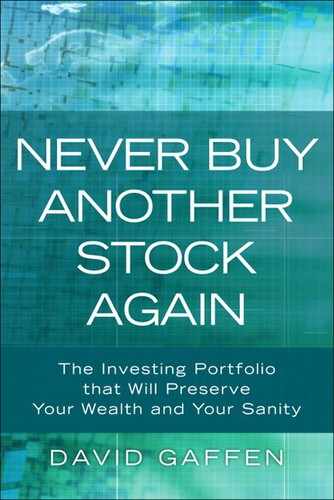Introduction
I come from a family of careful investors. There’s a theory that people who have not experienced the kind of hardships that Americans faced throughout the Great Depression are more cavalier with their money, but that didn’t extend to my family. At the end of every month, I take my spare change, put it into paper coin rolls, and deposit them at the bank, a habit learned from my grandfather. He was one of the all-time great penny-pinchers, who did suffer through the Depression.
But many in recent years forgot about the past—and they repeated it in horrific fashion. Investors with little or no experience in markets were lured into investing in stocks after more than two decades of terrific gains in the equity market, and they got their head handed to them after tech stocks tanked in the early part of the 2000s and the rest of the market was destroyed in the last part of the decade. Stocks have since come back dramatically and then faltered again, leaving many investors wondering just what to do and whether they’d do better just to leave their money under the mattress.
I didn’t write this book to validate your feelings of fear. I’ve been watching and investing in markets for 15 years as a financial reporter and editor. I think I’ve learned a few things, but much of what I’ve learned hasn’t been emphasized by big brokerages or popular media.
I originated, and for three years was the primary writer of, the Wall Street Journal’s MarketBeat blog, one of the most popular blogs on WSJ.com’s Web site. Now I work as an editor at the newswire Reuters overseeing the markets group, so I have a close eye on the ups and downs of the volatile stock market. I’ve come to understand that most investors don’t adequately understand the risks embedded in the stock market, and I’m here to try to explain some of them. In the years I’ve been writing about markets during my years at TheStreet.com, the Wall Street Journal, and now Reuters, I’ve met many investors who thought they had it all figured out, and I’ve also known many who understood the market was an unforgiving beast that could move against them at any time. Those who kept their guard up did better.
In reality, much of the best advice doesn’t stray far from my grandfather’s desk in his basement, where I watched him as he hunched over, meticulously putting quarters into rolls.
As someone who has been monitoring the markets for the better part of 15 years, I can say for sure that stocks are not the best—and sometimes one of the worst asset classes, because there are times when the stock market, when taking out transaction costs, management fees, and inflation, really does not give you much at all. But this book is not about finding some kind of new way to avoid the asset class that has been the mainstay of investing for decades, because stocks have provided strong returns overall that other investments, like bonds, cannot match.
This book has another purpose: To let you know you don’t have to bother with individual stocks at all. Those investors who aren’t willing, or do not have the time, to adequately research individual stocks in the equity market should start instead with index funds. Stocks can’t be ignored completely, and to stick your head in the sand and pretend you’re going to fund your retirement with bonds and not much else would be just as foolish as relentlessly buying equities no matter how bad the selloff.
Along with that, this book will show how a little bit of flexibility and common sense can go a long way to preserving your assets. And keeping your itchy fingers away from the keyboard will help prevent you from ruining your returns with excessive trading while increasing your anxiety. Because if trading costs and management fees are going to kill your returns, it makes the most sense that you should try to cut those down to as little as possible. Thankfully, there are ways to do this.
I’m going to focus on getting you to put much of your investing assets into index-style investments and exchange-traded funds that track major indexes. You’re going to have to limit your trading and avoid high-cost brokerages to keep your costs low, and you’re going to learn the importance of rebalancing your portfolio to help keep you on the path you want to be on for retirement. Finally, there’s diversification, but this diversification is much broader than what you’re accustomed to hearing about.
The main practical suggestions for you are in Chapter 10, “Putting It All Together,” where I break down my ideal portfolio, one that’s less equity-centric and designed to keep costs low. Before that, I’m going to look at ways investors get themselves into trouble and how you can avoid perilous situations—and also how to understand that they can’t be circumvented completely.
